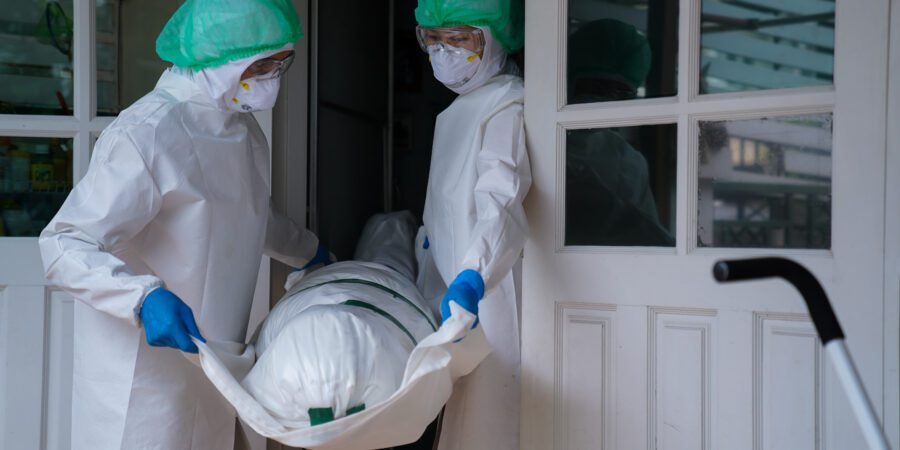Are The Figures Accurate?
Sobering Government Report on Nursing Home Deaths Likely to be an Underestimate
It is close to five months since the first reported case of COVID-19 in the United States and the Federal Government has just released its first full report on the effect the virus has had on long term care facilities. Set against the backdrop of the easing of lock down restrictions in the United States, the data highlighted 25,923 resident deaths and 449 staff deaths as a result of the virus (accurate at the time of the release of the report).
The report also provided data on the number of positive cases seen in nursing homes: approximately 60,000. This resulted in the Centers for Disease Control and Prevention director Robert Redfield describing the impact COVID-19 had on nursing homes as “devastating”.
Clearly, the extent to which the virus has impacted on some of the most vulnerable people in society is troubling – but the problems do not end there. It is likely that the true figure is even higher than the 25,923 deaths recorded: and, even more problematically, the number is only likely to increase.
So, why is the true death figure likely to be higher? The figures released are severely compromised by the fact there is no mandate on the data that precedes May 6. In other words, nursing homes in the United States are not legally obligated to provide the Federal Government with data on COVID-19 deaths that occurred before the 6th of May. It goes without saying that this comprehensively limits the validity of the data released in the report.
Moreover, the Trump Administration has announced that approximately 3,000 nursing homes have yet to release their data to the government, meaning that COVID-19 deaths in their facilities have not been included in the data released in the government report. Of the 15,400 nursing homes across the nation, 20% had little to no response to the surveys requesting the information.
Why Are These Inaccurate Numbers Problematic?
We answer this question by realising why the numbers were requested by the government in the first place. The first reason is for transparency – as the pandemic has swept the globe, it is important the population are informed on its true impact. Beyond this, the more pertinent reason is for policy change: the data must be understood before measures are implemented to tackle it.
With only 80% of nursing homes releasing their data to the government – and with it not being compulsory to release deaths and cases recorded before May – analysis of why nursing homes have been so badly hit has been compromised. Beyond that, there is a personal cost. Why do deaths due to COVID-19 in nursing before May not need to be registered? Do they not count? Are their deaths not as devastating as any other’s?
Democrat Senator Bob Casey of Pennsylvania released a statement addressing the inequity: “The families who lost a loved one prior to May 1 deserve a basic level of respect and their loved ones should be counted.”
An NBC News Tally estimated that of the 113,000 COVID-19 deaths in the United States, approximately 40,000 of those deaths can be directly traced to nursing homes and other facilities that provide residential care for the old, vulnerable and sick. It must be iterated that this is simply an estimate – and, until all nursing home deaths are released, that is all it will be.
Why COVID-19 is So Ripe in Long Term Care Facilities
Even if you took the COVID-19 nursing home deaths that were recorded in the government released report at face value, that would still mean nursing home deaths make up around 25% of the total COVID-19 deaths in the United States. Proportionally — even based on the conservative estimate — that is ridiculously high. But why is it so high?
According to Lisa Caruso MD from the Boston School of Medicine, “the asymptomatic spread of this virus allows it to easily sneak in to these facilities where essential staff go from nursing home to nursing home, like x-ray technicians, phlebotomists, nurses and nursing assistants who have to work more than one job to make ends meet.”
On top of this, over a month ago the Trump administration promised two weeks’ worth of PPE to all nursing homes across the United States, with the delivery to be divided into two different shipments. The reality? According to FEMA, not even half of the country’s nursing homes have seen even one shipment.
It was just last month that a wrongful death lawsuit was filed with the Los Angeles County Superior Court alleging that Ricardo Saldana, a resident of a nursing home in Glendale, had been knowingly exposed to COVID-19 by staff and other residents. It was claimed that symptomatic staff were allowed to come into contact with Mr Saldana even without protective equipment such as masks and gloves.
You add to this the fact that almost all residents in nursing homes are either elderly, vulnerable or have pre-existing medical conditions — making them high risk when it comes to COVID-19 — and the nursing home deaths begin to make sense.
What To Do If You Are Effected
Staff that work at nursing homes owe their residents a duty of care – which means they have to take all reasonable steps, within the scope of their employment, to protect their residents from COVID-19.
These steps would include staying at home if they have COVID-19 symptoms, and only coming into contact with residents if they are wearing adequate protective gear such as gloves.
If you or a loved one has caught COVID-19 while in a nursing home, or even passed away because of it, our experienced personal injury attorneys are here to fight for you and to determine the strength of your claim. Give us a call on: (888) 529-3111.


